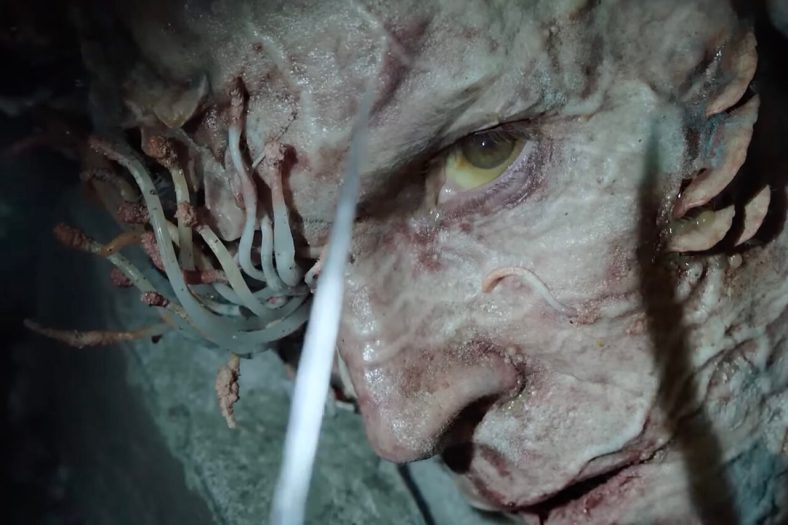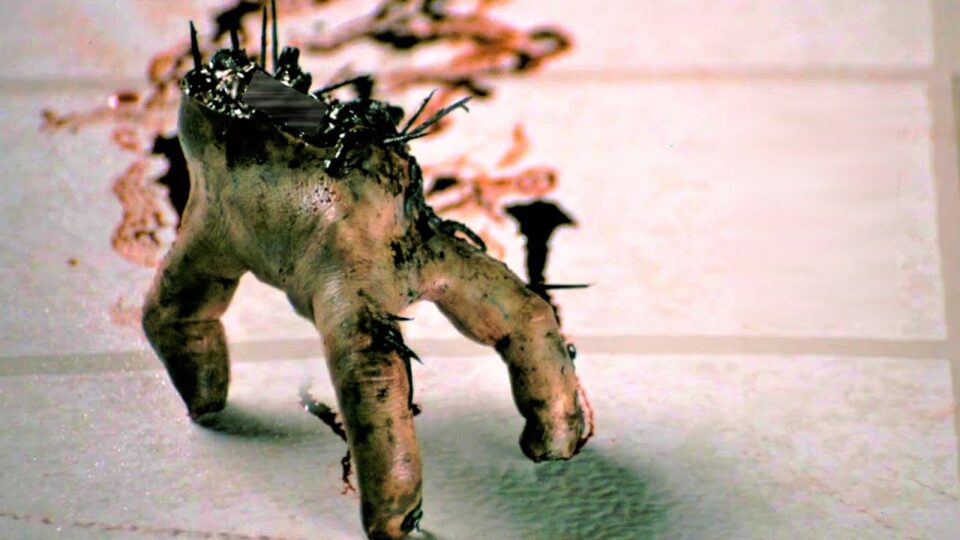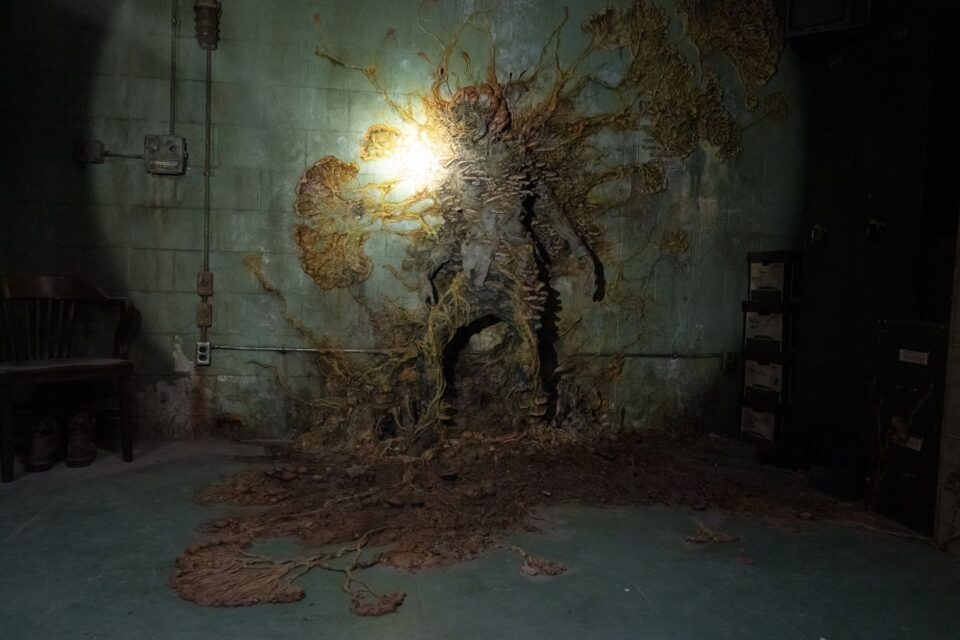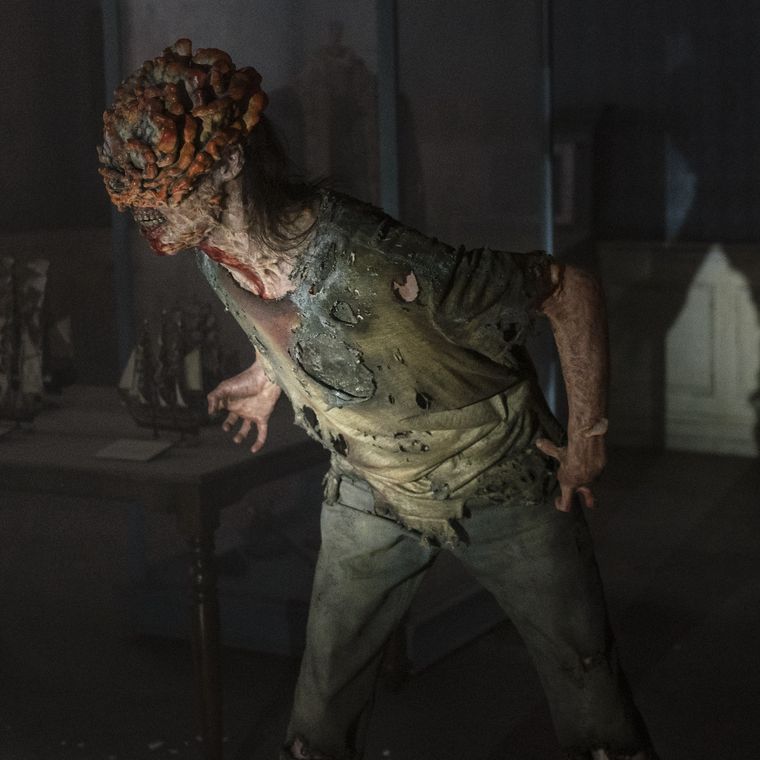‘The Last of Us’ and ‘Splinter’ Mix Fungus with the Zombie Plague

Since Romero reinvented zombies, creatives have tried to conceive scientifically feasible explanations for zombification. As seen in the slightly true The Serpent and the Rainbow, toxins and drugs, along with a little Hoodoo, can turn a living person into a zombie. Later films, such as 28 Days Later, relied on viral infections for their zombie outbreaks.
While many people have tried to incorporate viral infections as the instigation for the zombie apocalypse, fungal pandemics serve as a wholly unique instigation for a zombie plague. By examining how the zombifying fungus affects the victims in both The Last of Us and Splinter, we can see what makes this particular zombie iteration significant: body horror.
An Apocalypse or Hostage Situation?

Zombie films aren’t always zombie apocalypses. While The Last of Us certainly is an apocalypse on a grand scale, Splinter is more akin to Night of the Living Dead: a set of characters, forced together by circumstances, bunkered down in a remote location. In this case, a gas station. Still, The Last of Us, being more centered on human experience in the face of the apocalypse, isn’t exactly traditional zombie material either.
Regardless, both have the tenants of your typical zombie genre story. Or…not. While The Last of Us has fields of rotting bodies, here to devour you, Splinter focuses more on a minimal number of infected. The fungal growth is just something that grew in the woods that the characters disturbed, something feeding on animals it encountered that happened to brush against its barbs. The Last of Us indicates that the fungus came to society in our food. Splinter? We would have never encountered this potentially lethal fungus if we just stayed in our lane.
Both of these are manifestations of real concerns in the environmental community. A popular theory regarding mass hysteria in historical periods is that ergot, a fungus that grows on wheat, was allowed to fester, impacting our abilities to think rationally. In effect, turning us into slaves of a far stranger lifeform. Poor maintenance of food—as anyone who has seen Kitchen Nightmares can attest—can kill people. That on a massive scale? Yeah, it could trigger apocalyptic situations. But likewise, many modern epidemics and pandemics come from humanity encroaching on nature. The perfect cocktail of this is the COVID-19 pandemic, which was believed to have started in Chinese wet markets. A cocktail of animal waste getting into our food supply? Society breaks down.
Both The Last of Us and Splinter showcase the large and small impact of such a pandemic. It takes the personal fear of dealing with monsters, as well as the greater breakdown of society. And, in a post-COVID world, it feels all the more palpable. Though, by using fungus instead of a virus, both stories are able to explore far more horrific and bizarre iconography than a viral zombie film like 28 Days Later.
The Different Varieties

All zombie films illustrate our collective fear of our bodies being taken out of our control, of brain worms getting in and manipulating our behavior. But fungus has a history of removing control from our bodies. Ever since the 60s, mushrooms have become a popular hallucinogen. It’s easy to imagine something like that overtaking our brains and making us do ill will. Everyone knows someone who has gotten ringworm, which, contrary to the name, is not a worm at all, but a fungal growth. Combine the two together—mind-altering shrooms and a fungus feeding off your flesh—and you have these two zombie pandemics.
The immediate similarities between The Last of Us and Splinter are clear. Both center on a species of fungus that overtakes a host’s body with the intention of using them to spread a plague. However, by understanding their similarities, we also see key distinctions that inform how each breed of zombie is distinct, and why this distinction is, frankly, horrific.
Both use unreliable means to find their prey. The fungus in The Last of Us eventually obliterates a victim’s ability to see, either by deteriorating the eyes or visual cortex. Therefore, those overtaken by the fungus use sound to locate their prey. In Splinter, however, the zombies find their prey by searching for sources of heat. They do not need sound or sight at all.
In both stories, the zombies are essentially puppets to the fungus that has overtaken them. But the distinctions between how the fungus overtakes them are important.

In The Last of Us, the fungus bombards the brain with chemical reactions, influencing behavior. In this sense, it’s possible that the victims have a degree of awareness while overtaken by the fungal growth. Destroying the brain, as in a typical zombie story, can kill the zombie. While the fungus can still function outside a host body—and even create a neuro-network underground to relay information to other infected—the body is still alive and, as such, subject to death. In fact, advanced infections result in the body physically deteriorating until all that’s left is a blossom of mushrooms among skeletal remains.
In Splinter, though, this isn’t the case. The fungus turns the body into a puppet, controlling nerve endings and movement entirely. Because the fungus is in control, any damage you do to the body is superficial. Cut it apart, blow it up, doesn’t matter. Every individual infected body part is alive. This illustrates the sheer bizarreness of fungus growths. They exist and communicate using hyphae, those tendrils that look like filaments. Fungi can sometimes have thousands of different sexes. They can mate and create colonies of interconnected lifeforms. While we see that in The Last of Us with the neuro-network relaying information regarding targets across the city of Boston, we see it arguably more horrifically in Splinter, where detached body parts are able to communicate.
The Degradation of the Flesh
All of this accomplishes one goal: turning flesh into just a commodity. Undeniably, fungi turning a body into a host is terrifying. But what’s more horrific than that is rot and decay. And both of these zombies excel at that. While we don’t see the Splinter entities exist long enough to enter into advanced decay, we do see the body distorted and actively rot thanks to the contact with the fungus and its splinter-like barbs, emerging from underneath the flesh. It turns the human body into a vehicle for greater intelligence.

But Splinter does have one shortcoming. Because the film takes place essentially over a single night, it’s hard to illustrate the long-term impact this fungus has on the body. It has the immediate impact of overtaking the flesh, but does the fungus keep the body viable as a vehicle for long? What happens a month after initial contact? A year? Five?
The Last of Us hardwires decay into its system of zombification. It illustrates, very clearly, the finite nature of the zombie. You can see the very landscape scarred with the remains of totally decayed zombies. We see the body physically crumble with fungal growths, with heads splitting open and fungal armor encasing a body. Over time, the body becomes far less human as the fungi feed on flesh to function. And as a result, we see the utter dehumanization and destruction of the human form.
Some of the most horrific visuals in The Last of Us are not advanced zombies—though scenes with the Clickers where you have to remain utterly silent are intense. The most unsettling visual is the most realistic: the ringworm-esque growths under the skin as the fungus overtakes you. Or the fungus communicating with a victim by kissing them. It takes the familiar and makes it into something grotesque. Human interaction and behavior become less than animalistic. It isn’t like rabies, where you can at least understand the rage and a desire to inflict harm. It rather becomes something totally inhuman, yet also familiar enough to feel real. It’s truly grotesque in a way that’s hard to articulate.

And, of course, anything where filament is sprouting out of a person’s skull is just plain gross.
Categorized:News

